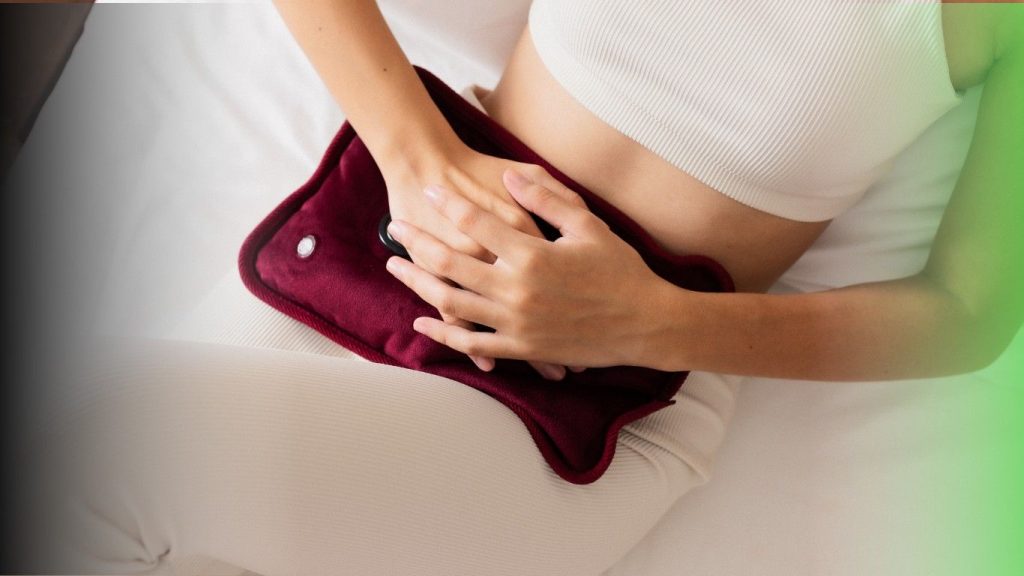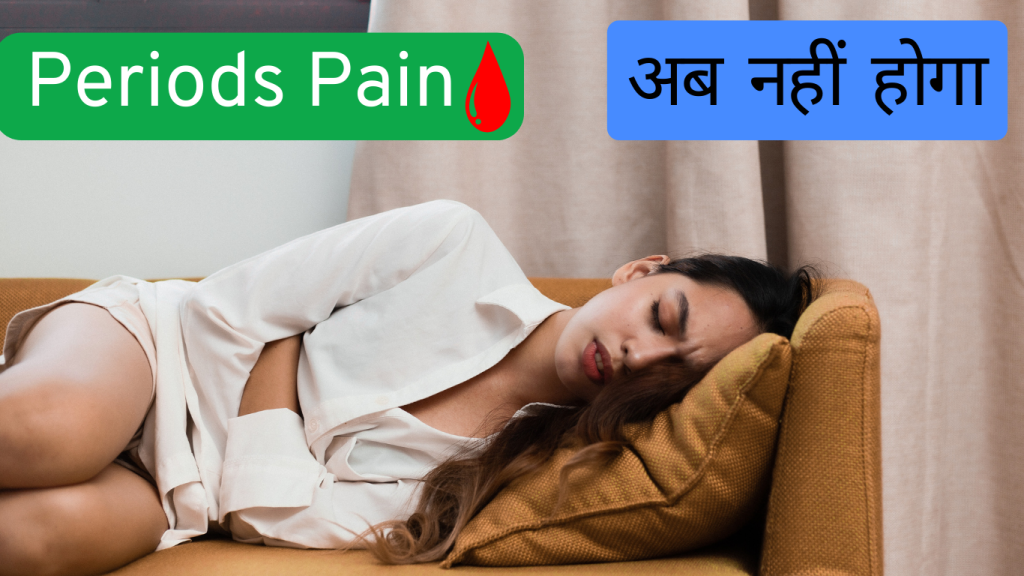Period pain (dysmenorrhea) is suffered by millions of women around the world. For some, it is mild discomfort, while others experience severe cramps, nausea and heavy bleeding.
If you are tired of relying on painkillers, this guide will help you understand Menstrual cramps, its causes and natural ways to get relief.
This article is written based on the advice and knowledge of expert doctors.

Experiencing period pain is a common concern among menstruating individuals. This comprehensive guide delves into the reasons behind period pain, particularly menstrual cramps and heavy flow, and offers practical solutions to alleviate discomfort.
While it’s often dismissed as a normal part of the menstrual cycle, understanding the underlying causes and exploring effective relief methods can significantly improve quality of life.
Why Do Menstrual Cramps Occur
Menstrual cramps are caused by contractions of the uterine muscles as they shed the uterine lining.
These contractions are triggered by hormone like substances called prostaglandins. Higher levels of prostaglandins are associated with increased pain intensity. Additionally, conditions such as endometriosis, fibroids, and adenomyosis can increase cramping by causing inflammation and muscle spasms in the uterus.
This causes women to experience a lot of pain and cramps during menstruation.
Common Causes of Period Pain
First Dysmenorrhea :- Normal cramps due to menstrual cycle.
Secondary Dysmenorrhea :- Caused by conditions like endometriosis, fibroids, or PCOS.
Heavy Flow :- More blood, stronger contractions, worse pain.
Why Do Some Women Have Heavy Periods
Heavy menstrual bleeding, or menorrhagia, is characterized by excessive menstrual blood loss that disrupts daily activities.
Several factors contribute to heavy flow. A heavy flow (menorrhagia) can make cramps worse. Common reasons include.
Uterine Fibroids and Polyps :- Non-cancerous growths in the uterus can cause prolonged and heavy periods.
Blood Disorders: – Conditions like von Willebrand disease can affect blood clotting, leading to excessive bleeding.
Hormonal Imbalances :- Disruptions in estrogen and progesterone levels can lead to an overgrowth of the uterine lining, resulting in heavy bleeding.
Adenomyosis :- A condition where the uterine lining grows into the muscle wall, leading to heavy and painful periods.
Intrauterine Devices :- Certain IUDs, especially non-hormonal ones, can increase menstrual bleeding.
Thyroid disorders :- can have a significant impact on menstrual health, including period pain (dysmenorrhea). Here’s how each condition may relate to menstrual pain.

Effective Relief Methods for Period Pain
Gentle Exercise and Yoga – Engaging in light physical activities like walking, stretching, or yoga can release endorphins, which are natural pain relievers.
Specific yoga poses such as Child’s Pose, Cobra Pose, and Cat-Cow Pose can help alleviate menstrual discomfor.
Heat Therapy :- Applying heat to the lower abdomen can relax uterine muscles and alleviate cramps. Using a heating pad, hot water bottle, or warm bath are effective methods.
Studies have shown that heat therapy can be as effective as nonsteroidal anti-inflammatory drugs (NSAIDs) in reducing menstrual pain.
Acupressure :- Applying pressure to specific points on the body can alleviate Menstrual cramps discomfort. For instance, pressing the area between the thumb and index finger or three fingers below the inner ankle may provide relief from menstrual cramps .
Omega-3 Fatty Acids :- Eat flaxseeds, salmon, walnuts. Supplements can help if diet is lacking.
Chamomile Tea :- Sip 1-2 cups daily to ease pain and stress.
Cinnamon :- Add ½ tsp cinnamon powder to warm milk or tea.
Ginger Tea :- Boil fresh ginger in water, add honey. Drink 2-3 times daily during periods.
Stay Hydrated :- Drink warm water, herbal teas, coconut water. Avoid caffeine & salty foods (increase bloating).
Precautions
While home remedies help, consult a doctor if.
Avoid Excessive Caffeine and Salt :- Excessive consumption of caffeine and salty foods can increase bloating and discomfort during menstruation. This should be avoided.
Consult a Healthcare Provider :- If menstrual pain is severe or persistent, it’s essential to seek medical advice to rule out underlying conditions.
Monitor Iron Levels :- Heavy bleeding can lead to iron deficiency; it’s crucial to monitor iron levels and consider supplementation if necessary.
⚠️ Periods last longer than 7 days.
⚠️ You notice large blood clots frequently.
⚠️ Pain is unbearable even after remedies.
⚠️ You experience dizziness or extreme fatigue.
Conclusion
While period pain is a common experience, understanding its causes and implementing effective relief strategies can significantly enhance well-being.
By incorporating lifestyle adjustments, natural remedies, and seeking medical guidance when necessary, individuals can manage menstrual discomfort more effectively. Remember, it’s essential to listen to your body and seek professional advice if symptoms persist or worsen.
Period pain doesn’t have to control your life. By using heat therapy, herbal teas, exercise, and a balanced diet, you can reduce cramps naturally. If pain persists, consult a doctor to rule out underlying conditions.
Spacial Note
Please read the note. The information given in this article has been taken from Ayurvedic books and Senior Ayurvedic doctors. These articles only show information for health and the way to stay healthy. And before taking any Ayurvedic remedies and medicines, consult an Ayurvedic doctor once, only after that take any medicine or treatment.
Is period pain normal?
Yes, mild pain is normal, but if the pain becomes unbearable then consult a doctor.
Does yoga really provide relaxation?
Yes, regular yoga reduces pain by increasing blood flow.
What medicines can be taken to reduce pain?
Paracetamol or ibuprofen may provide temporary relief, but don’t overdo them.